5 Close Calls to Nuclear War
You'll never believe how close we've been to Armageddon.
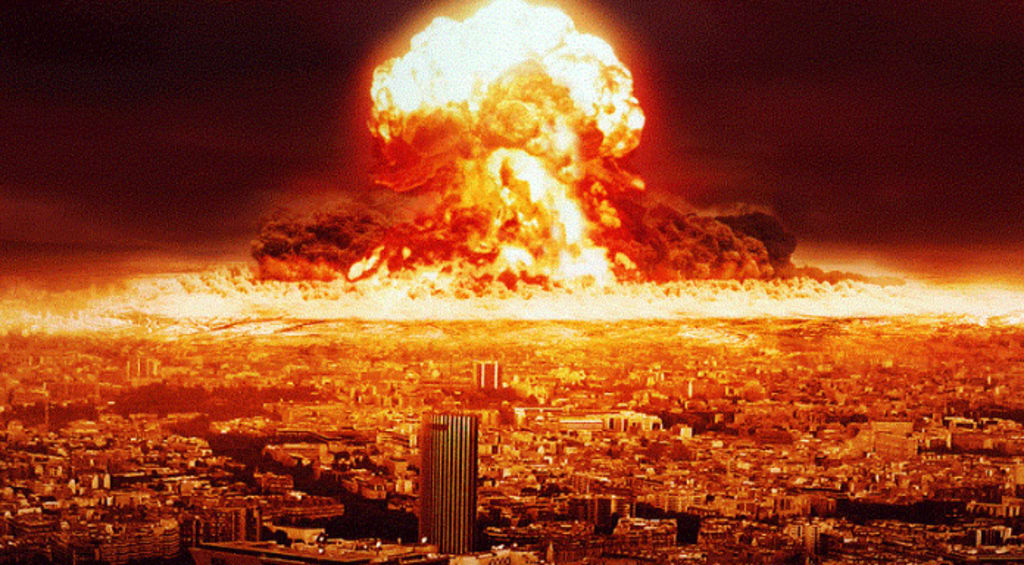
With the possibility of North Korea constructing and using a nuclear missile against South Korea, Japan, or the United States, perhaps we should look back into history during the days of the Cold War on the five closet calls to Armageddon before and how we managed to avoid it.
5.) 1983 Soviet Nuclear False Alarm Incident
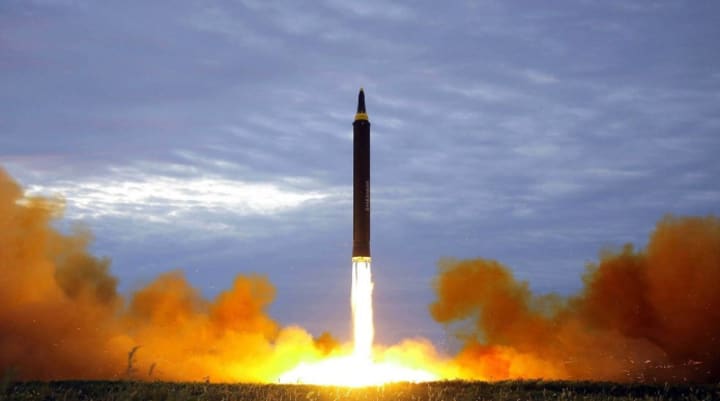
It only takes one person to "push the button."
Imagine this: Here in the United States as well as in Russia and China are national security units that watch the skies through satellites and computers for any potential threats such as nuclear missiles. But what happens when one of those devices makes a mistake, such as mistaking a ray of sunlight for 5 nuclear missiles... twice?
Such a possibility took place on September 23, 1983.
Deep underneath the city of Moscow, Lt. Colonel Stanislav Petrov was in command at Serpukhov-15, a bunker where the Soviets monitored their satellite-based detection systems for potential threats from the air. One night, an alarm went signaling that the United States had fired five Intercontinental Ballistic Missiles, or ICBMs, toward Russia two times. The warnings were a false alarm—one of the satellites had misinterpreted a ray of sunlight off clouds near Montana as a missile launch—but to the Soviets, it appeared the United States had started a nuclear war.
Its worth noting that a few weeks prior on September 1, the Soviet Air Force had shot down and destroy a commercial airliner called Korean Airline 007 off the cost of Sakhalin Island, claiming the plane to be a reconnaissance plane recording data for the U.S Military. Internationally this could be considered an act of war.
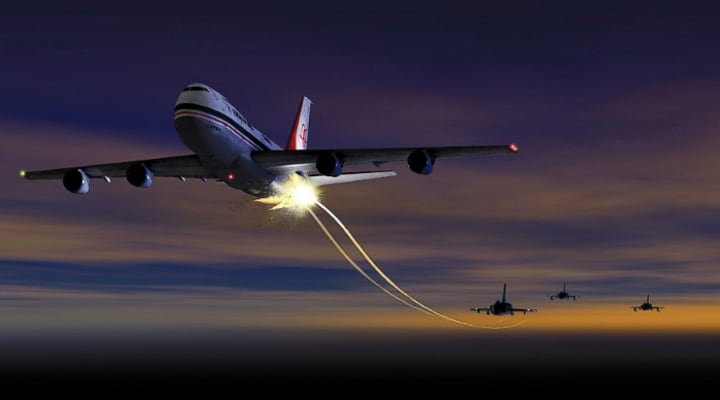
Another factor was that the North Atlantic Treaty Organization (NATO) was undergoing military exercises labeled as Able Archer 83 preparing their national security forces for Soviet nuclear attack. The Soviet Union viewed the exercise as a "ruse of war" — a trick to launch an attack against a country under the guise of something seemingly peaceful like a military exercise so it makes sense to see why the Soviets took the alarm seriously.
The protocol called for the base commander to report the attack to their superiors so they may order the missiles to retaliate whenever a nuclear missile was detected however Petrov disobeyed orders and refused to pass on the alarm to his superiors - this choice of action would cost him his position in the military.
Even though Petrov was relived of his command for breaking orders, his choice saved the rest of the world from nuclear warfare which would have resulted in the deaths of millions of people around the world.
4.) 1995 Norwegian Rocket Incident

Also known as the Black Brant Scare.
This occurred on January 25, 1995, when a team of Norwegian and American scientists launched a Black Brant XII sounding rocket from the Andøya Rocket Range off the northwestern coast of Norway.
The rocket was intended to record data regarding the Aurora Borealis over the Arctic Ocean but went into an air corridor stretching from Minutemen III nuclear missile silo bases in North Dakota to the capital city of Moscow. The rocket reached an altitude of 1,453 kilometers, resembling a U.S. Navy Trident nuclear missile.
At this point, The Soviet Union had collapsed since 1991 and Russia had been renamed "The Russian Federation," a name still used today.
Russian Security detected the rocket approaching and mistook it for a nuclear missile. Russian nuclear forces were put on high alert and the nuclear weapons command suitcase, otherwise known as Cheget, that held the launch codes to launch the missiles, was given to then-President Boris Yeltsin. At first Yeltsin took his "nuclear keys" to unlock the briefcase but word was received that the rocket crashed into western Norwegian territory.
The incident was the first and so far only known incident where the nuclear briefcase was brought out and preparations for a counter attack were considered.
3.) The 1979 NORAD Computer Glitch
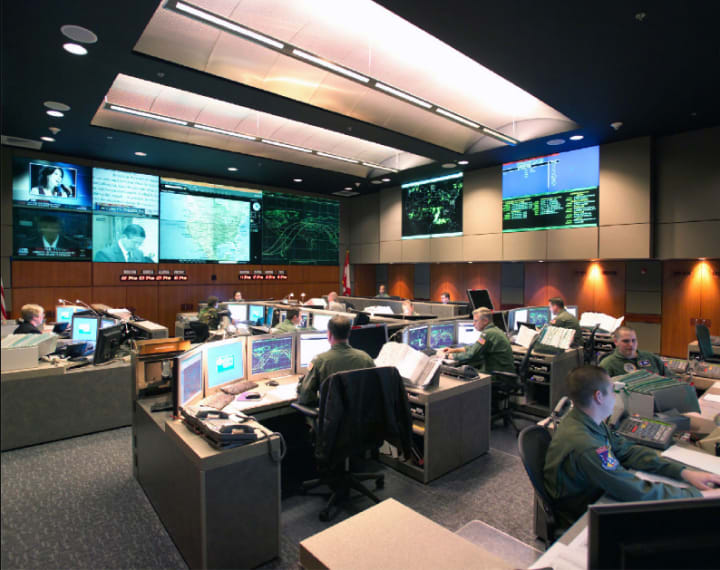
In 1970s, both the United States and the Soviets relied on computer systems to detect possible nuclear attacks. But while the new technology was more sophisticated, it also came with possible false alarms and glitches.
On the morning of November 9, 1979, technicians at NORAD received an urgent alert that the Soviets had launched a series of missiles at the U.S Convinced a nuclear attack was coming, the U.S. air defense program scrambled 10 interceptor fighter planes, ordered the president’s “doomsday plane” to take off, and warned launch control to prepare the missiles for a counter attack.
The panic soon declined after NORAD consulted its satellite data and realized the nuclear warning was just a false alarm. They discovered that a technician had accidentally run a training program tape simulating a Soviet attack on the United States. The incident sent shock waves through the international community—Soviet leader Leonid Brezhnev even wrote President Jimmy Carter a letter noting the “tremendous danger” caused by the error. But it was not the last time a computer issue led to a nuclear scare. Similar incidents would occur three more times at NORAD the following year.
2.) Berlin Crisis of 1961

As if a wall wasn't enough.
In the fall of 1961, the flow of eastern German immigrants into Allied-controlled West Berlin forced the Soviets to build a wall around the West Berlin border to stop the flow of immigration. Sound familiar?
The construction of the wall lead to international issues regarding the relationship between the U.S and the Soviet Union, specifically the freedom for diplomatic traveling in and out of both Berlin sectors.
On October 22, 1961, U.S diplomat Allan Lightner was crossing Checkpoint Charlie into the eastern sector until he was stopped by East Berlin border guards to see his identification - an act that wasn't supposed to be mandatory for diplomats since Lightner's vehicle had the diplomatic seal on it. Lightner refused to show any identification and was order back to the west.
As a way to scare the Soviets into allowing diplomats to cross, Army tanks were brought to the checkpoint. Diplomats freely moved in out until the Soviets brought up their tanks as well.
Former Army General, Lucius D. Clay, then-President John F. Kennedy's Special Advisor in West Berlin, was called in to respond to the crisis.
Clay sent an American diplomat, Albert Hemsing, to probe the border. While probing in a vehicle with the seal of the US Mission in Berlin, Hemsing was stopped by East German police asking to see his passport. Once his identity became clear, US Military Police were rushed in. The Military Police escorted the car as it drove into East Berlin and the shocked East German police got out of the way. The car continued and the soldiers returned to West Berlin. The next day, a British diplomat was stopped and showed his identity card, since his car lacked the diplomatic seal, identifying him as a member of the British Military Government in Berlin, infuriating Clay.
The crisis lead to the possibility of U.S tanks destroying the Berlin Wall. This would have viewed as an invasion of East Berlin — land invasion was considered dangerous enough for launching a nuclear strike. This would have triggered a nuclear war which would have lead to the deaths of millions.
However finally, on October 28th, the Soviets pulled their tanks out of East Berlin followed by the U.S and peace was won over.
1.) The Cuban Missile Crisis, 1962
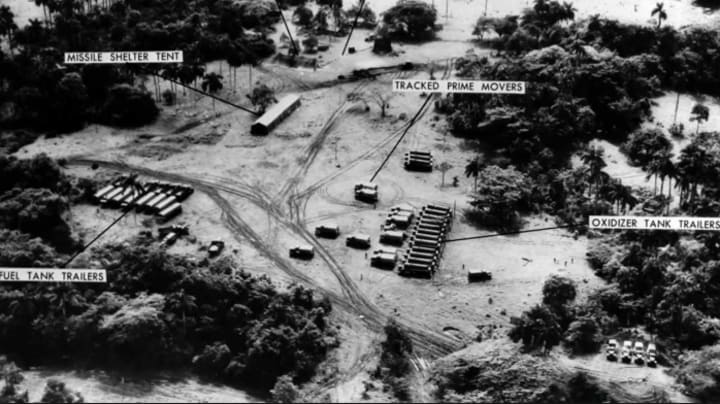
The clock has struck midnight.
Or at least, that's what almost everyone thought would happen in October of 1962.
On October 14th, 1962, a U2 spy plane was flying over the island of Cuba where it was discovered that the Soviet military had been building nuclear missiles bases on the island pointed directly at the U.S.
President John F. Kennedy order his cabinet to call on an emergency meeting he called the Executive Committee of National Security Council, or EXCOMM. The committee had to vote on how the situation had to be dealt with. The choices were either:
A.) Do nothing: American vulnerability to Soviet missiles was nothing new.
B.) Diplomacy: Use diplomatic pressure to get the Soviet Union to remove the missiles.
C.) Secret approach: Offer Cuban Communist leader Fidel Castro the choice of splitting with the Russians or being invaded.
D.) Invasion: Full force invasion of Cuba and overthrow of Castro.
E.) Air strike: Use the US Air Force to attack all known missile sites.
or
F.) Blockade: Use the US Navy to block any missiles from arriving in Cuba.
Many military officials wanted both an air strike and an invasion in order to regain the island of Cuba not just from the Soviets but also from the communist government and liberate the people. Kennedy refused, believing any attack on Cuba could result in a nuclear world war from the Soviets.
Interestingly enough, the U.S. had already attempted an invasion of Cuba in April of 1961 called the Bay of Pigs. Cuban exiles to Florida were trained by the C.I.A. into soldiers in order to invade the Island and overthrow Castro. But unfortunately the invasion was a failure due to lack of U.S air support. This failed invasion was one of two reasons why the nuclear missiles were there in the first place — to prevent another invasion.
EXCOMM eventually voted on a naval blockaded on Cuba. This was illegal internationally during peace time between the two countries so the U.S labeled it as a "quarantine." Kennedy would announce this on a television address on October 22, 1962, sending the world into a panic. Many people starting buying canned food and water jugs for their fallout shelters or decided to head out towards the mountains.
The blockade would only escalate the crisis even more into war because the Soviets at first were planning on ignoring the blockade and were going to run right through the ships.
Before a war at sea could happen, a secret meeting took place in Washington D.C between a Soviet spy known as "Alexander Fomin" and an ABC News correspondent named John Scali. The two had prior on several occasions and Scali had communications to Kennedy at the time. Scali sent Fomin's request to Kennedy that the Soviets suggest that the best way to solve the crisis was for the U.S to publicly promise not to invade Cuba and to remove a series of U.S nuclear missile bases that had been stationed in Turkey and Italy - the second and final reason; Because the U.S put missiles in Russia' backyard so the Soviets decided to do the same to the U.S.
After long talks regarding the offer, Kennedy agreed to the terms and promised not to invade Cuba as well as order the missile bases out of Turkey and Italy.
Out of this crisis came the "Hotline phone", a special phone with a connection from Washington D.C to Moscow. During the crisis the only communication they had were letters which would take over 36 hours to sent. Too long to wait with nuclear warfare hanging over their heads.
The U.S. has close to nuclear war many times before and it's actually pretty amazing and almost a miracle that we never did. Hopefully today's politicians and military officials have learned from our past and can use these to prevent any future issues.
About the Creator
Joseph Pecher
I'm a Creative Writer, I LOVE writing about, Movies, Television, Sci-Fi, History, Media, or every day things! I write content regarding education, entertainment, and fun!


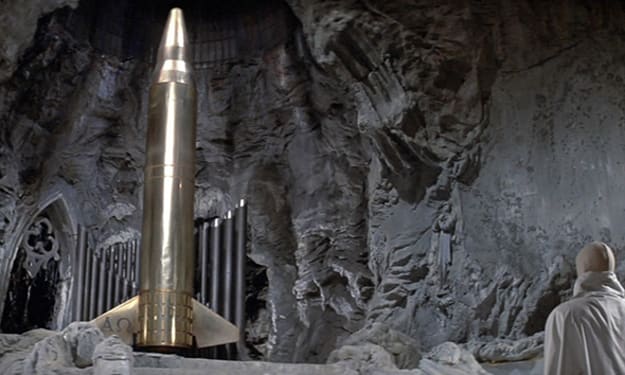



Comments
There are no comments for this story
Be the first to respond and start the conversation.